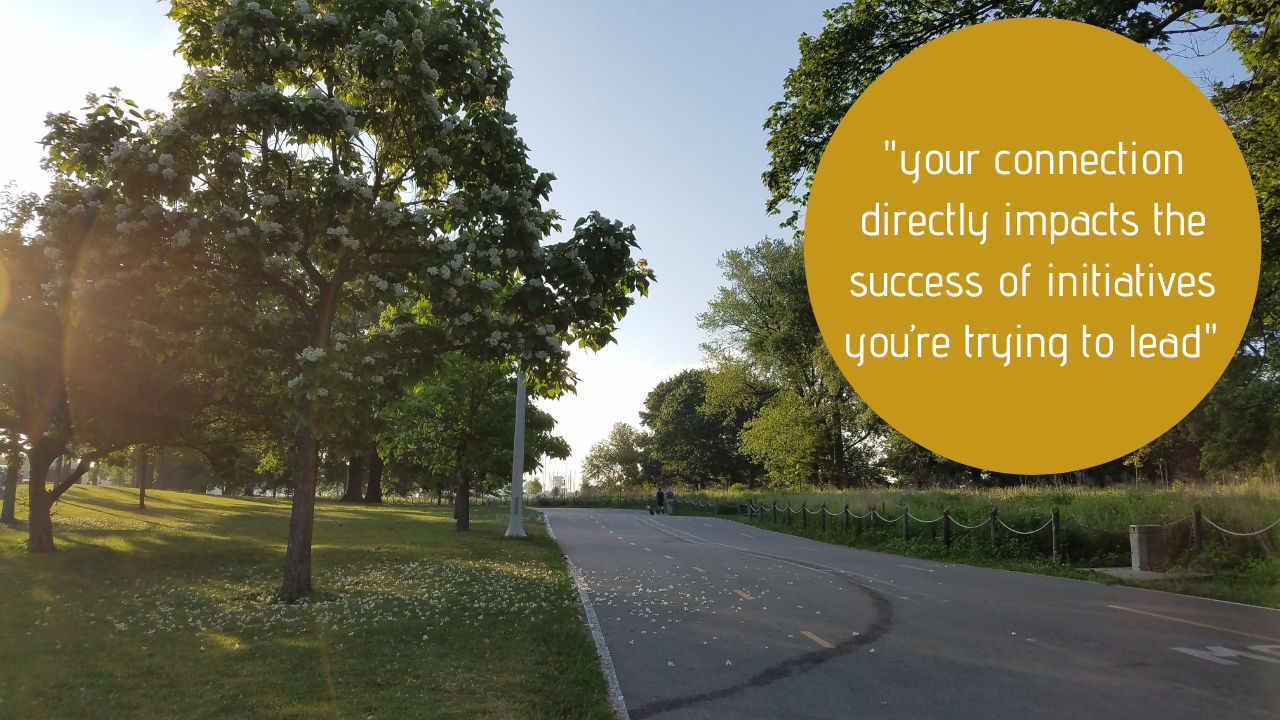Re-Thinking your Sphere of Connection

A few Sundays ago, I went for an early morning jog at a fascinating moment.
Some partiers were finishing the prior night’s drinks from their balcony perches (the stamina!), at the same time that elderly couples were taking their morning stroll arm-in-arm.
Also in that moment, the sun caught this tree, mid-transformation, at just the right angle. It literally stopped me in my tracks.
When I saw the way the flowers were scattered around the tree, I thought of you. So I took this photo.
I thought about how you’re leading changes, projects, and teams, and what your scope of connection to others might look like when mapped out...with fallen tree blossoms. Yes, it would look like this.
You are more connected to those who are close to you.
By “connected” I mean the likelihood of someone following you, not because their reporting lines dictate it, but because of some other bond.
Why is this important? Because your connection directly impacts the success of initiatives you’re trying to lead.
What do you mean by “close to you”?
We each have different ideas of what “close to you” means.
For some, it may mean physical, hierarchical, or demographic proximity, meaning those whose workspaces, positions, and/or identities are close to yours. People may be close to you because of your shared interests, social styles, or cognitive styles.
While what makes them close to you could vary significantly, the important point is awareness.
Why is awareness important?
Having awareness of the connection you inherently have with others is crucial for several reasons, especially when you’re trying to move an initiative forward.
Those close to you are more likely to instinctively champion your initiative because they’ve had more exposure to how dedicated you are to it and to the rationale behind it, and/or because they have similar belief/value systems to you. So, they either trust you or they trust you…
But what about those who are farther afield? If you say that a policy change is important, are they going to blindly trust that? If you announce that an upgrade will be made on the database your colleagues use daily, how likely are they to walk hand-in-hand in that simply because you said it’s important?
Since leading successful change requires a critical mass of people actively supporting your initiative, if you aren’t connected to enough people, you’re going to have to be strategic about reaching the number of people to be successful.
How to be intentional
You can take some initial steps. By having awareness of who is close to you, you are able to determine who’s not. This is your friendly reminder to evaluate that, folks!
Additionally, you may need to dig a bit deeper to identify why certain people aren’t within your circle of connection and what you can do about it.
You’ll have some easy ones, such as not being physically close to someone’s workspace or your work not overlapping, which are challenges that are easy enough to rectify over coffee.
More challenging situations are those where your identities and values differ significantly. Are there power differences between you and others? Do societal expectations make it unusual for you to connect? Do you have distinct motivations? It’s valuable to reflect and learn from that.
Big picture, the primary way to be strategic about reaching the masses is to develop change management and change leadership plans — and then make sure that you actually implement them. That’s something I can help you with, so schedule a free first consultation session with me to explore.

Megan E. Mozina
Founder & Principal
Cresta Solutions
she/her


